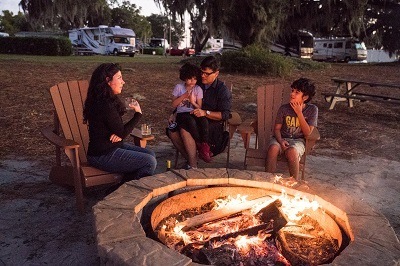
A new study conducted by Ipsos and Go RVing found record RV ownership in the U.S., with younger RV owner totals continuing to grow.
The Go RVing RV Owner Demographic Profile Study, the first demographic study since a 2011 University of Michigan study was released, found 11.2 million households own an RV in 2021, up 62 percent since 2001 and 26 percent since 2011.
Additionally, 9.6 million households intend to buy an RV within the next five years.
The full 200-page study is available only to RVIA and RVDA members. Ipsos surveyed 5,000 current, former and intended owners to comprise the demographic profile study.
“This is the most comprehensive study we have ever done on the RV consumer,” Go RVing Vice President of Brand Marketing Karen Redfern said. “The insight into the motivations and habits of RV consumers will allow us to more effectively target like-minded owner prospects with customized messaging designed to draw them into the purchase decision by mirroring their lifestyle needs and creating a desire for the benefits of RVing.
“Armed with this data and the advances of digital marketing,” Redfern said, “Go RVing can effectively reach individuals that have never been on our radar in the past, allowing us to continue expanding the marketplace for our members and the overall industry.”
The study found more than half (51 percent) of RV owners now are younger than 55. The study found 22 percent of RV owners are between 18 and 34 years old, with 84 percent of those saying they planned to buy another RV in the next five years.
“This study provides tremendous insight into the purchasing patterns and intentions of prospective and current owners,” RVDA President Phil Ingrassia said. “This new Go RVing data can help dealers more effectively target promotional and advertising efforts in their market areas.”
Current RV owners’ median annual usage remains steady at 20 days, the study found, with people intending to buy an RV saying they plan to use their RV a median of 25 days per year. This increase is indicative of the changing attitudes towards remote work and the ability for more people to be able to work from a destination more frequently than traditional vacation days afforded in the past, RVIA stated.
Nearly a third of the respondents (31 percent) are first-time owners. The study found ownership is spread widely across age levels, genders, household income and education.
The study identified seven distinct RV owners clusters. Ranging across demographics, attitudes, RV usage habits, and motivations, these seven clusters help to understand variances in RV owners across more than the type purchased, RVIA stated, instead shedding light on the unique motivations, needs, and habits of each buyer group.
“The data revealed by this study provides fascinating insight, not only into the RV industry, but into the ways in which Americans have changed how they work, play, and enjoy the great outdoors,” RVIA President and CEO Craig Kirby. “For the first time, we have detailed data on the distinct subgroups that make up the current RVers and RV intender groups, allowing RV manufacturers and dealers to maximize the effectiveness of their communications with their customers and prospective customers.”
The largest owner cluster is Casual Campers, which the study found comprise 39 percent of total RVers. The study stated Casual Campers use their RV onlu a few weekends a year in the warmer months. Casual Campers thoroughly enjoyed the RV lifestyle and its provision of relaxation and an escape in nature for years, the study stated. They are the least committed to the lifestyle, the study found, although Casual Campers are a large and satisfied group in total. Casual Campers have low RV usage and an interest in other travel options.
Family Campers are the next largest cluster, comprising 33 percent of RVers. The study found Family Campers most often grew up with an RV and use camping to bond with family and spark the hobby for the next generation. Limited by full-time employment, the study found summer tends to provide brief periods of escape for these young owners.
Escapists are the next largest cluster at 16 percent. The study found Escapists are committed to the RV lifestyle and enjoy the exploration camping provides. Traveling as a family for two months of the year, the study found Escapists thrive in water-based activities and anywhere with natural beauty to soak in.
Avid RVers are next at 6 percent. The study found avid RVers are committed to RVing every chance they have, using their RV for approximately a season. To this group, the study found RVs provide a romantic getaway opportunity and a chance to see the best nature has to offer.
Next up is Happy Campers, comprising 3 percent of all RVers. Happy Campers love RVs and the adventures that they bring, the study found. Happy Campers primarily are snowbirds, the study found, and use their RV as an escape from weather and household budgets for half the year. Happy Camers simply could not imagine their lives without an RV, the study found.
Full Timers are next at 1.5 pecent of all RVers. Full Timers adopted their RV as their home, the study found, embracing the lifestyle to its fullest. Traveling year round, these nomad owners are set to see the world, the study found, and appreciate the joys and freedom this lifestyle provides them.
Finally, Adventure Seekers comprise 1 percent of RV owners. Small but mighty, the study found, Adventure Seekers know the world is for exploring. As outdoor enthusiasts that thrive on numerous hobbies, the study found Adventure Seekers can be found anywhere there is wilderness to tame – hiking one minute and skiing the next.




